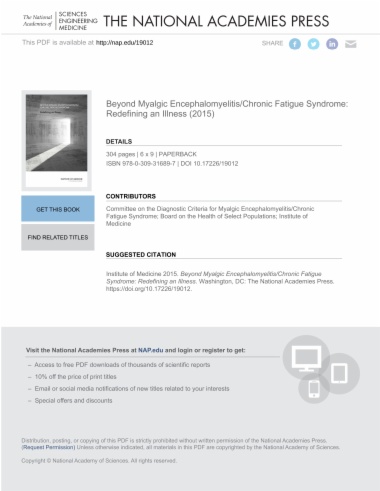

Myalgic encephalomyelitis (ME) and chronic fatigue syndrome (CFS) are serious, debilitating conditions that affect millions of people in the United States and around the world. ME/CFS can cause significant impairment and disability. Despite substantial efforts by researchers to better understand ME/CFS, there is no known cause or effective treatment. Diagnosing the disease remains a challenge, and patients often struggle with their illness for years before an identification is made. Some health care providers have been skeptical about the serious physiological - rather than psychological - nature of the illness. Once diagnosed, patients often complain of receiving hostility from their health care provider as well as being subjected to treatment strategies that exacerbate their symptoms.
Beyond Myalgic Encephalomyelitis/Chronic Fatigue Syndrome proposes new diagnostic clinical criteria for ME/CFS and a new term for the illness - systemic exertion intolerance disease(SEID). According to this report, the term myalgic encephalomyelitis does not accurately describe this illness, and the term chronic fatigue syndrome can result in trivialization and stigmatization for patients afflicted with this illness. Beyond Myalgic Encephalomyelitis/Chronic Fatigue Syndrome stresses that SEID is a medical - not a psychiatric or psychological - illness. This report lists the major symptoms of SEID and recommends a diagnostic process.One of the report's most important conclusions is that a thorough history, physical examination, and targeted work-up are necessary and often sufficient for diagnosis. The new criteria will allow a large percentage of undiagnosed patients to receive an accurate diagnosis and appropriate care.
Beyond Myalgic Encephalomyelitis/Chronic Fatigue Syndrome will be a valuable resource to promote the prompt diagnosis of patients with this complex, multisystem, and often devastating disorder; enhance public understanding; and provide a firm foundation for future improvements in diagnosis and treatment.